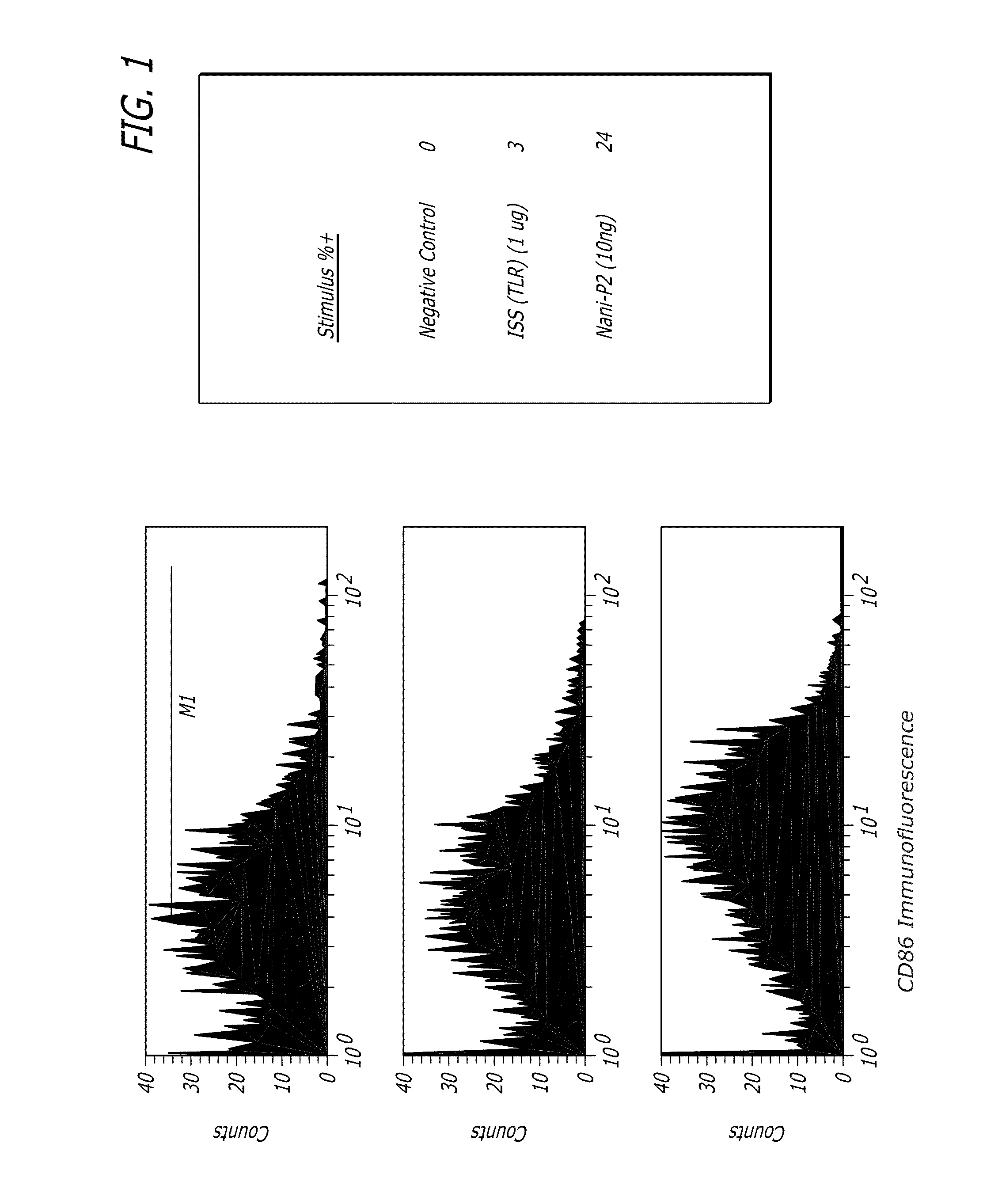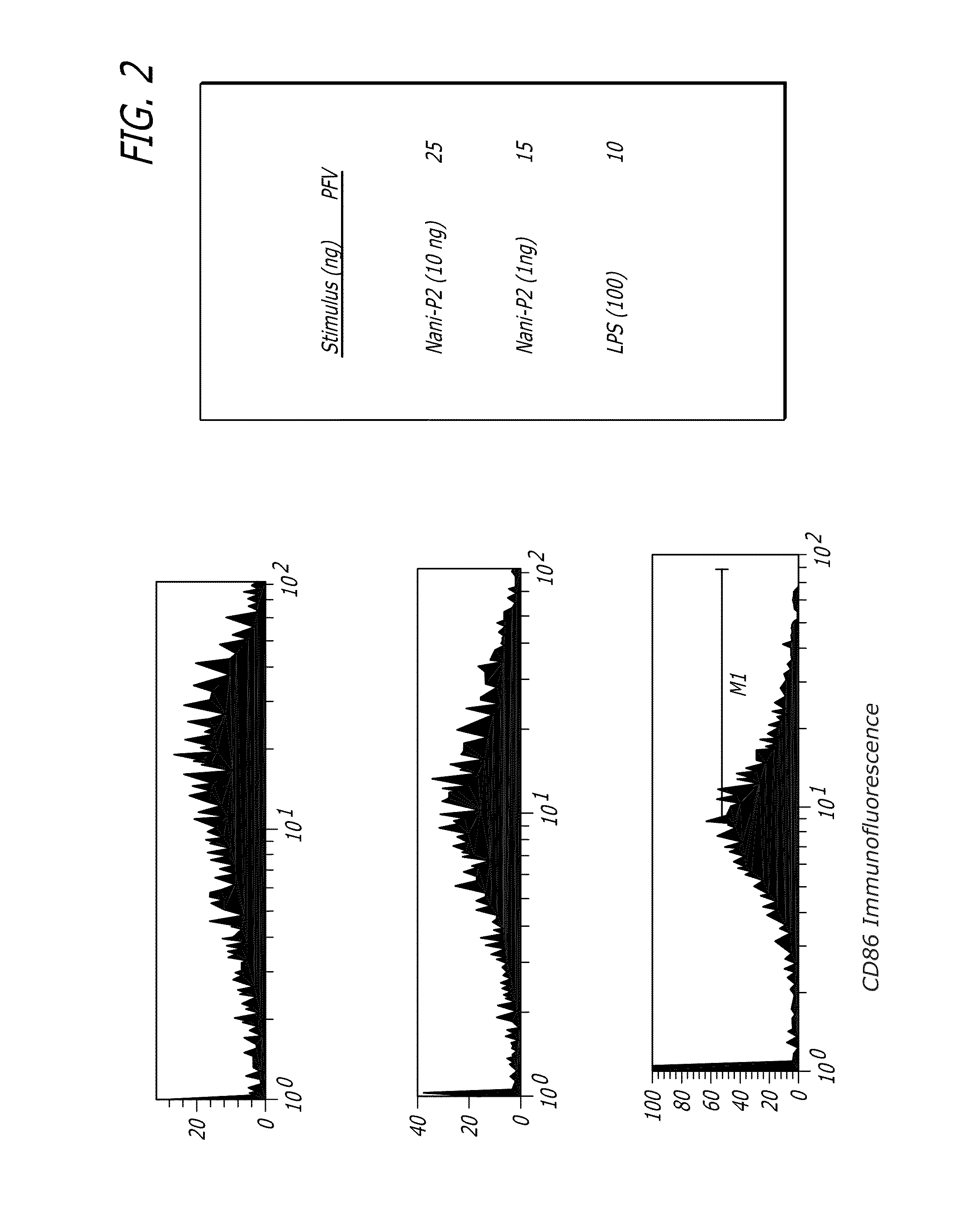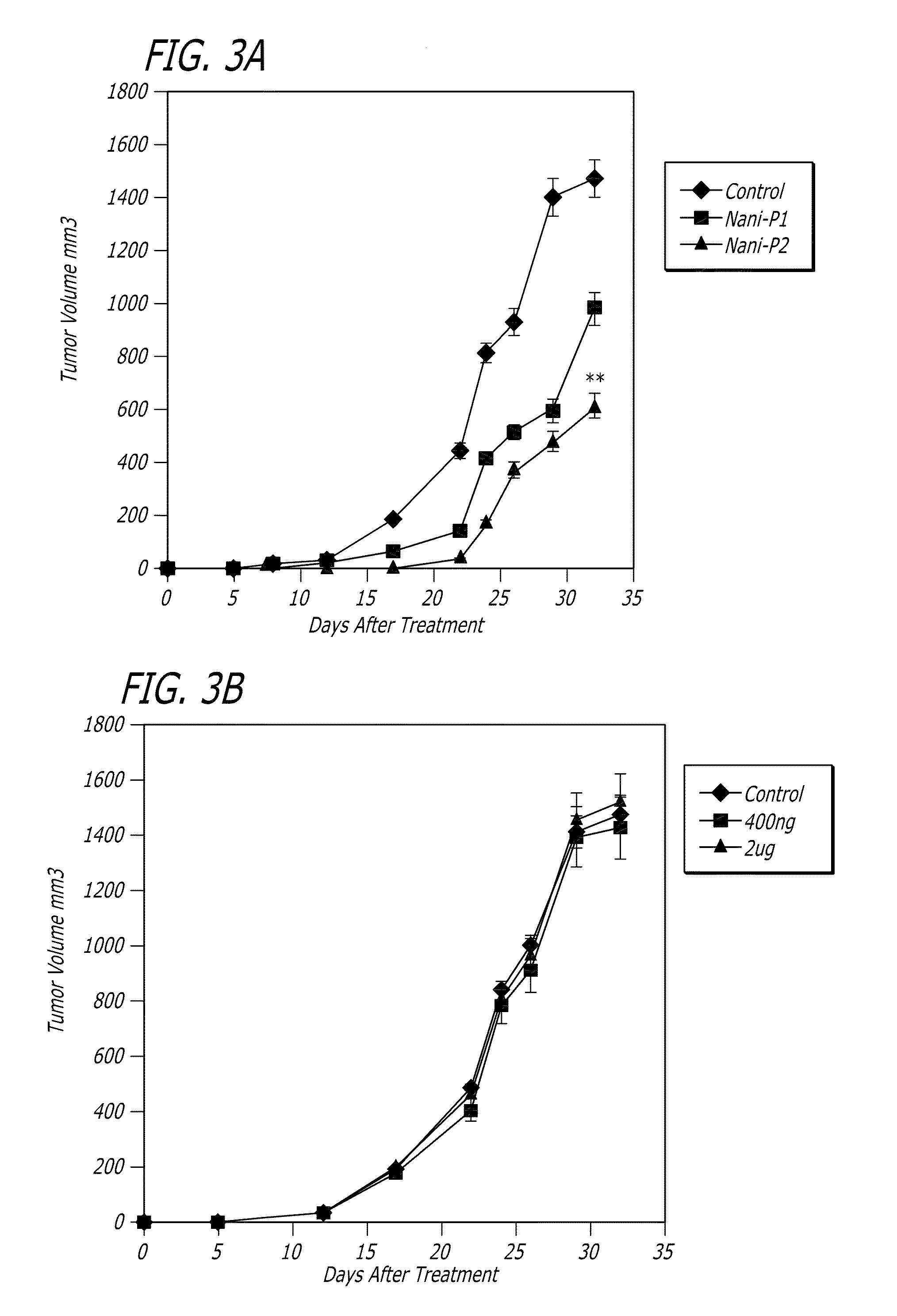Treatment of cancers with immunostimulatory HIV tat derivative polypeptides
a cancer and immunostimulatory technology, applied in the field of immunostimulatory hiv tat derivative polypeptides, can solve the problems of limited efficacy of heat shock proteins in cancer treatment of certain genitals, hampered efforts to develop immunotherapeutic drugs that treat cancer, and limited human treatment effect of cancer immunotherapy drugs, etc., to achieve the effect of reducing tumor burden
- Summary
- Abstract
- Description
- Claims
- Application Information
AI Technical Summary
Benefits of technology
Problems solved by technology
Method used
Image
Examples
example 1
Design and Production of Tat Derivatives
[0071]Three exemplary Tat derivatives are disclosed herein, each of which replaces the TF hr fragment in a different manner. The underlined portions of the sequences represent the sequences between the prolines.
Nani-P1-(MPM1; SEQ ID NO: 2)MEPVDANLEAWKHAGSQPRKTACTTCYCKKCCFHCQVCFTRKGLGISYGRKKRRQRRRAPQDSQTHQASLSKQPASQSRGDPTGPTESKKKVERETETDPFDNani-P2-(ASH4; SEQ ID NO: 3)MDPKGEEDQDVSHQDLIKQYRKPRTACNNCYCKKCCFHCYACFLRKGLGITYHAFRTRRKKIASADRIPVPQQSISIRGRDSQTTQESQKKVEEQAKANLRISRKNLGDETRGPVGAGN.Nani-P3-(TMPD5; SEQ ID NO: 4)METPLKEQENSLESCREHSSSISEVDVPTPVSCLRKGGRCWNRCIGNTRQIGSCGVPFLKCCKRKPFTRKGLGISYGRKKRRQRRRAPQDSQTHQASLSKQPASQSRGDPTGPTESKKKVERETETDPFD
[0072]SH3 binding proteins contain a series of internal prolines required for TF function. Nani-P1 has removed the internal prolines, which are each substituted as alanine, rendering the SH3-binding site inactive. This alteration cripples the entire Tat protein as a TF, because it is now produced predominant...
example 2
In Vitro Activity of Tat Derivatives
[0075]Human monocytes were cultured for 24-28 hours with a Tat derivative (Nani-P2), an immunostimulatory sequence (ISS) of a toll-like receptor (TLR) (FIG. 1) or lipopolysaccharide (LPS) (FIG. 2) and the cells were then washed and stained with fluorescent-labeled CD86. The Tat derivative stimulated higher expression of CD86 than either ISS (TLR) or LPS.
example 3
Evaluation of Tat Derivatives in Mouse Models of Breast Cancer
[0076]Materials and Methods
[0077]Animals. Female BALB / c mice 6 to 8 weeks old were purchased from the Jackson Laboratory (Bar Harbor, Nebr.). Mice were acclimated for at least 1 week before use. Mice were kept in pathogen-free conditions at the Animal Maintenance Facility of the Columbia University of Medical Center and all experiments were approved by the Institutional Animal Care and Use Committee of Columbia University of Medical Center.
[0078]Cell lines. 4T1 cells, a 6-thioguanine-resistant cell line derived from a BALB / c spontaneous mammary carcinoma was obtained from ATCC; TS / A, a murine adenocarcinoma cell line was provided by Dr. Sandra Demaria (Demaria S. et al. Clin Cancer Res. 11:728-34, 2005); and SM1, the BALB / C-derived mammary carcinoma was kindly was provided by Dr. James Allison, University of California, Berkeley. All tumor cell lines were cultured in DMEM, supplemented with 2 mM L-glutamine, 10 mM HEPES, ...
PUM
 Login to View More
Login to View More Abstract
Description
Claims
Application Information
 Login to View More
Login to View More - R&D
- Intellectual Property
- Life Sciences
- Materials
- Tech Scout
- Unparalleled Data Quality
- Higher Quality Content
- 60% Fewer Hallucinations
Browse by: Latest US Patents, China's latest patents, Technical Efficacy Thesaurus, Application Domain, Technology Topic, Popular Technical Reports.
© 2025 PatSnap. All rights reserved.Legal|Privacy policy|Modern Slavery Act Transparency Statement|Sitemap|About US| Contact US: help@patsnap.com



